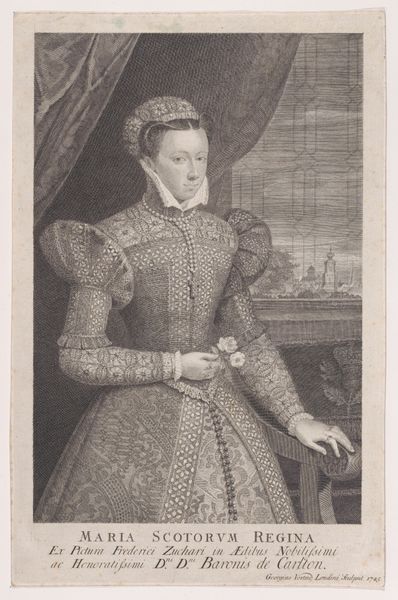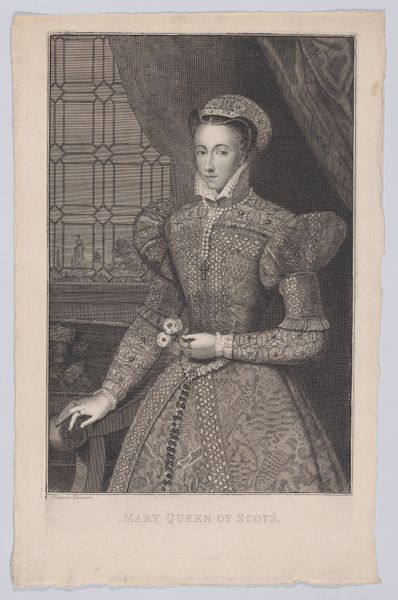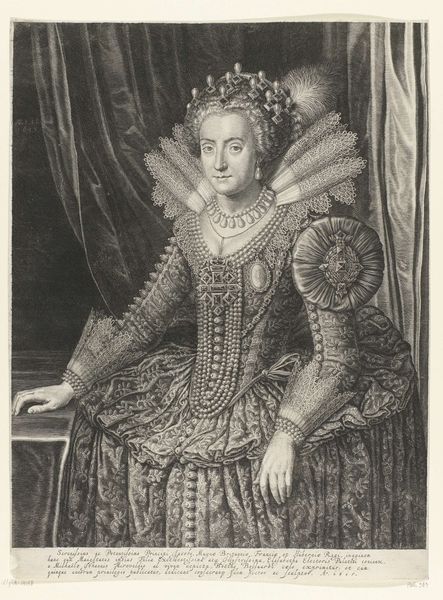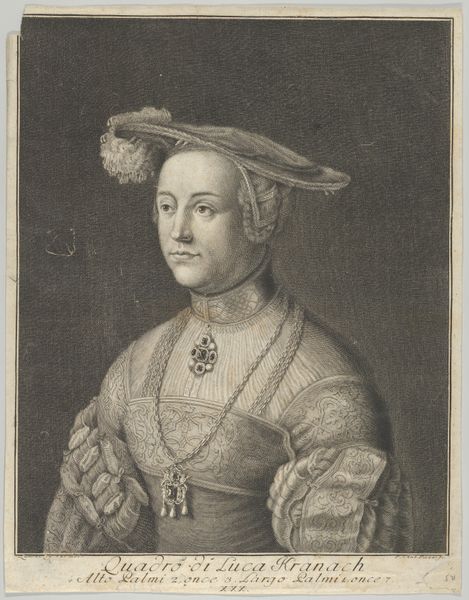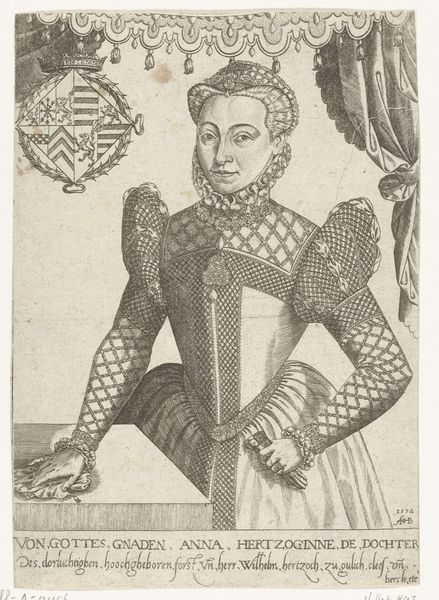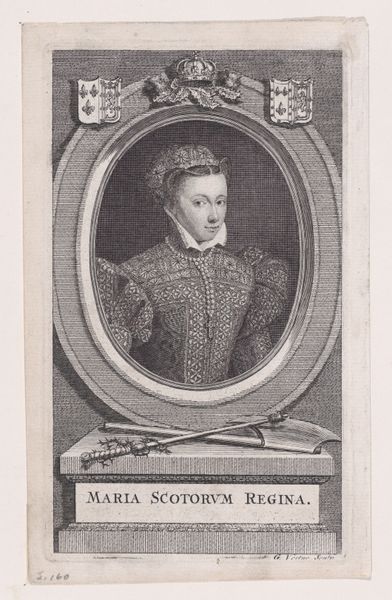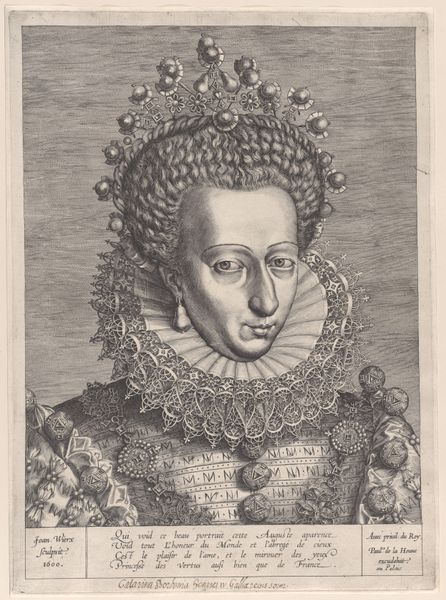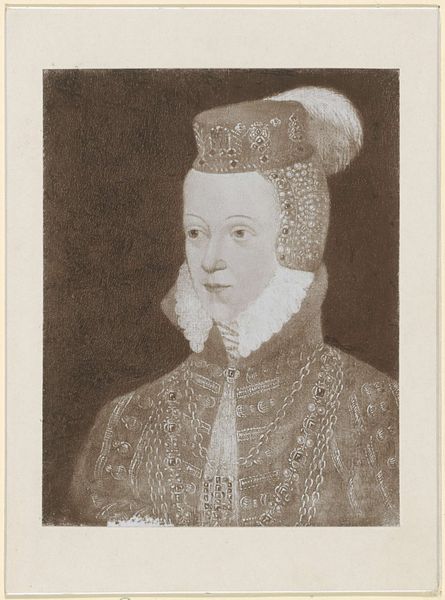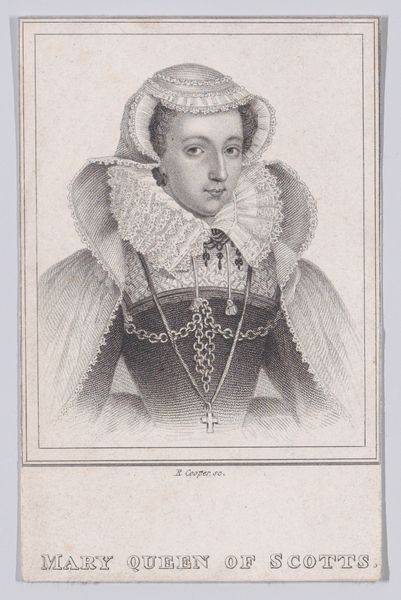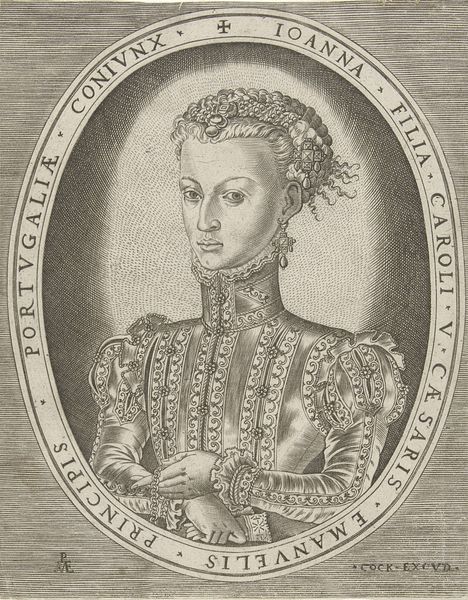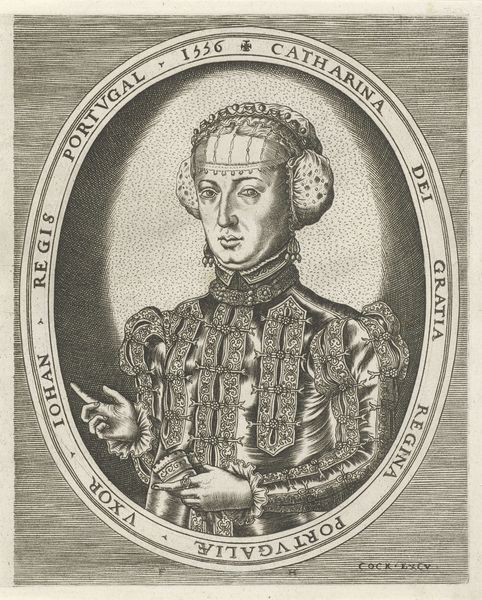
drawing, print
#
portrait
#
drawing
#
medieval
# print
#
11_renaissance
#
historical fashion
#
19th century
#
history-painting
#
northern-renaissance
Dimensions: Sheet (trimmed): 10 in. × 8 7/8 in. (25.4 × 22.6 cm)
Copyright: Public Domain
Editor: So, here we have "Mary, Queen of Scots(?)," a drawing or print from somewhere between 1700 and 1750, attributed to Federico Zuccaro. It has such a formal, almost stoic feeling to it. I’m really struck by the incredible detail in her dress. What do you see in this portrait? Curator: The detail itself is intriguing. Look closely. The later date suggests this isn't a contemporary portrait, so we need to ask: What is this image meant to *do*? Images of Mary Queen of Scots carried a huge emotional and political weight. What symbols are emphasized here, and what do they signify about how she's being *remembered*, or perhaps even *rehabilitated*, by this later artist? Editor: The roses she’s holding? Roses are symbols of love but they could also symbolize secrecy. She seems to be keeping secrets in this portrait. Curator: Precisely! And note how the artist has rendered the Scottish symbols behind her. It's not just about identification, but a powerful statement of national and personal identity. Considering her history, how do those symbols change how we see the image? Does it complicate that stoic feeling you mentioned? Editor: Absolutely, it adds a layer of defiance. She's not just a queen; she's a symbol of Scotland, even in captivity, even after death. The artist is creating an icon. The symbols point toward a deliberate construction of identity, then. Thanks! Curator: Yes, and thinking about this as a print - how does the act of reproduction affect its symbolic meaning? It makes it more widely accessible and perhaps more impactful. I'm walking away today pondering just how much history a single image can carry and the degree to which those meanings shift across time.
Comments
No comments
Be the first to comment and join the conversation on the ultimate creative platform.
